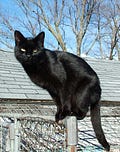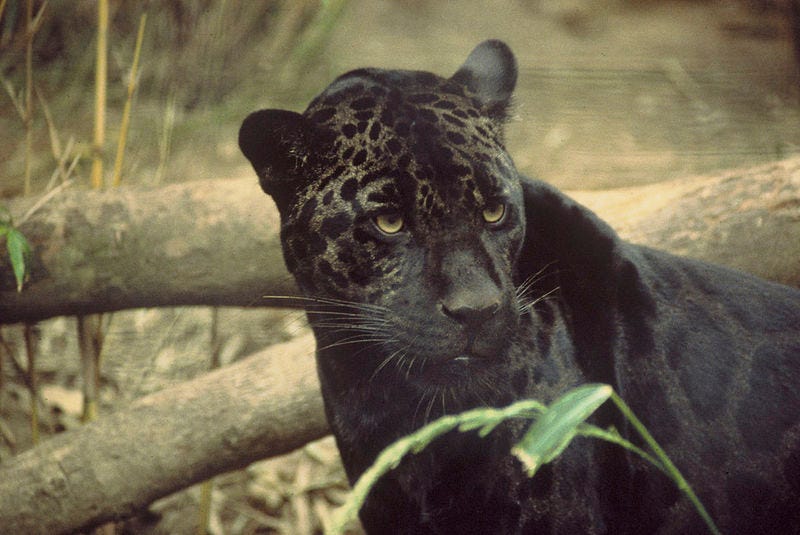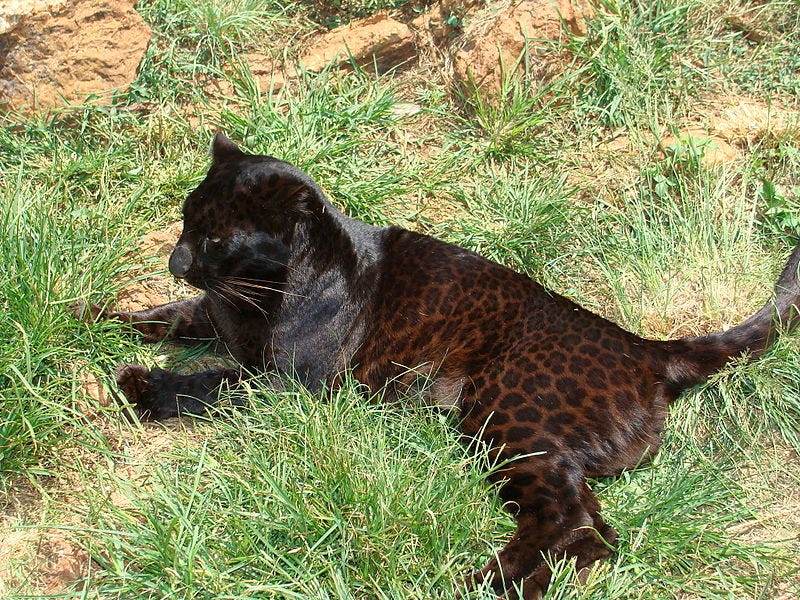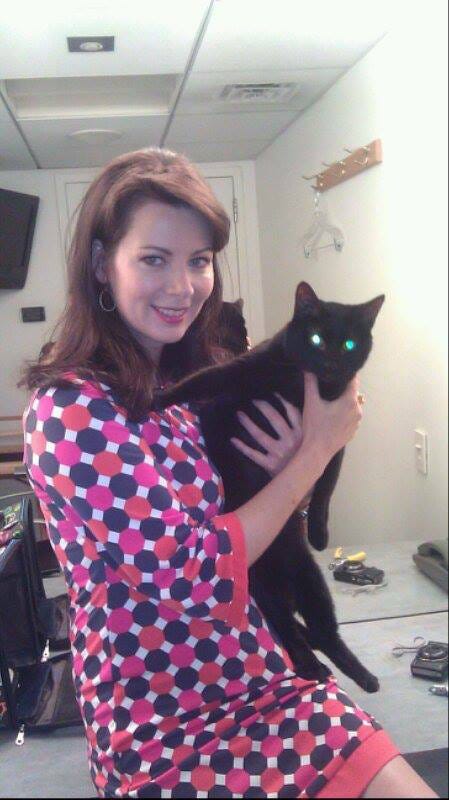By Jordan Schaul | National Geographic | August 17, 2013 (Edited)
Today is National Black Cat Appreciation Day. We celebrate black domestic cats of pure or mixed breed pedigree, and, perhaps, some of their wild feline cousins. This consciousness event is intended to help dispel age-old superstitions concerning these black felids.
Hopes are that the celebration will popularize these single-colored felids among the demographic of cat owners, potential owners, and “foster parents” in the United States. This is all in light of legendary myths that have to lead to the demise of black cats for centuries.
Although some cultures consider the black cat to be good luck, as is the case in the UK, most US residents fear these boldly colored feline companion animals—doing everything they can to avoid crossing the path of a black cat. Presumably, they are also less inclined to take one of these dark-colored creatures home.
For staff and volunteers at animal shelters nationwide, it is hoped that black cats, which are usually the last to be adopted, if at all, benefit from this day of heightened black cat awareness.
Despite the reluctance of many to keep black cats, solid black is a permitted color option in 22 cat breeds registered by the US-based Cat Fanciers’ Association.
Melanism, which is also seen in 11 of the 36 wild felid species, produces yellow irises as a result of high levels of melanin in the pigment of these carnivorans. In addition, melanism, the opposite of albinism, is most prevalent in male cats.
Incidentally, the “black panther” refers to any melanistic jaguar, leopard, or jaguarundi. To date, no record of melanism has been reported in cougars (Puma concolor), including the Florida panther—an endangered subspecies of cougar (aka mountain lion, catamount, puma).
Phenotype transmission analyses suggest that melanism, which is hypothesized to be adaptive in some felid species for ambushing prey, arose independently several times in the cat family (Felidae). More recently, melanism has been suspected of conferring some immunological benefit to cats with regard to pathogen resistance.
Remember that keeping large cats is illegal in many states and private ownership is highly frowned upon due to the dangers of working with exotic felids and their challenging welfare needs in captivity.
If you choose to rescue a black cat or any other domestic felid in need, please remember to keep the cats inside or construct an outdoor “catio” enclosure for them.
I also encourage you to read The Cat Whisperer (Random House) by cat behaviorist Mieshelle Nagelschneider. The science-based book is especially recommended if you need to address behavioral issues in multi-cat households or are contemplating relinquishing an animal or rescuing another feline friend.
My review of the book: “The reason people are so mesmerized by house cats is that they are truly miniature versions of lions, tigers, and leopards. Mieshelle explains in an unprecedented and a most accessible way, the behavior of the house cat, with her unique insight into the often misunderstood companion animal that is as wild as we have become civilized.” - Jordan Schaul
ABOUT NATIONAL GEOGRAPHIC SOCIETY
The National Geographic Society is a global nonprofit organization that uses the power of science, exploration, education and storytelling to illuminate and protect the wonder of our world. Since 1888, National Geographic has pushed the boundaries of exploration, investing in bold people and transformative ideas, providing more than 14,000 grants for work across all seven continents, reaching 3 million students each year through education offerings, and engaging audiences around the globe through signature experiences, stories and content. To learn more, visit www.nationalgeographic.org or follow us on Instagram, Twitter and Facebook.
MEET THE AUTHOR
Jordan Carlton SchaulWith training in wildlife ecology, conservation medicine and comparative psychology, Dr. Schaul's contributions to Nat Geo Voices have covered a range of environmental and social topics. He draws particular attention to the plight of imperiled species highlighting issues at the juncture or nexus of sorta situ wildlife conservation and applied animal welfare. Sorta situ conservation practices are comprised of scientific management and stewardship of animal populations ex situ (in captivity / 'in human care') and in situ (free-ranging / 'in nature'). He also has a background in behavior management and training of companion animals and captive wildlife and conservation marketing and digital publicity. Jordan has shared interviews with colleagues and public figures, as well as editorial news content. In addition, he has posted narratives describing his own work, which include the following examples: • Restoration of wood bison to the Interior of Alaska (As Animal Curator at Alaska Wildlife Conservation Center and courtesy professor at the University of Alaska) • Rehabilitation of orphaned sloth bears exploited for tourists in South Asia (As executive consultant 'in-residence' at the Agra Bear Rescue Center managed by Wildlife SOS) • Censusing small wild cat (e.g. ocelot and margay) populations in the montane cloud forests of Costa Rica for popular publications with 'The Cat Whisperer' Mieshelle Nagelschneider • Evaluating the impact of ecotourism on marine mammal population stability and welfare off the coast of Mexico's Sea of Cortez (With Boston University's marine science program) Jordan was a director on boards of non-profit wildlife conservation organizations serving nations in Africa, North and South America and Southeast Asia. He is also a consultant to a human-wildlife conflict mitigation organization in the Pacific Northwest. Following animal curatorships in Alaska and California, he served as a charter board member of a zoo advocacy and outreach organization and later as its executive director. Jordan was a member of the Communication and Education Commission of the International Union for the Conservation of Nature (CEC-IUCN) and the Bear Specialist Group of the IUCN Species Survival Commission (BSG-SSC-IUCN). He has served on the advisory council of the National Wildlife Humane Society and in service to the Bear Taxon Advisory Group of the Association of Zoos and Aquariums (AZA Bear TAG). In addition, he was an ex officio member of the council of the International Association for Bear Research and Management.






